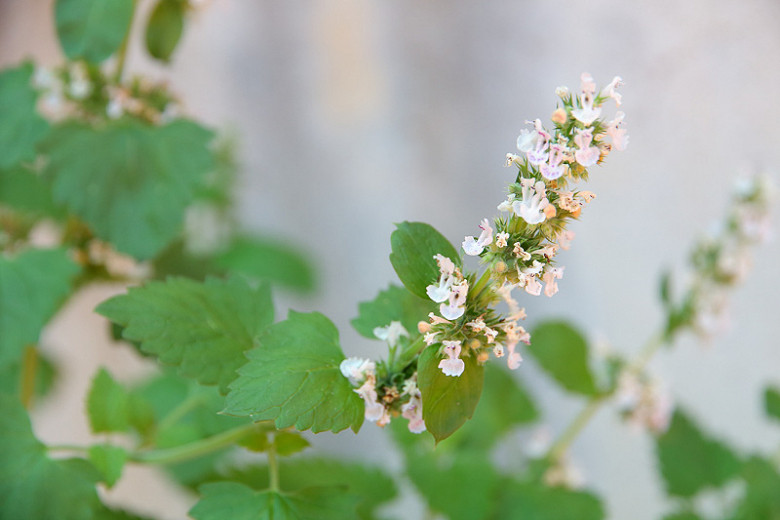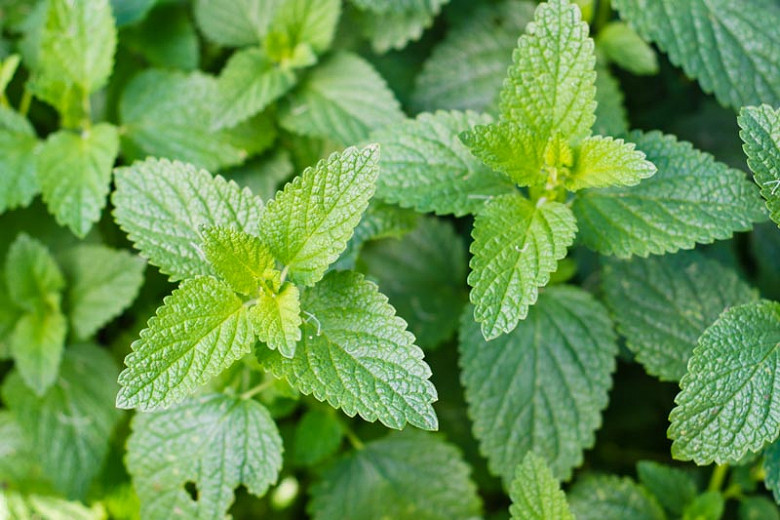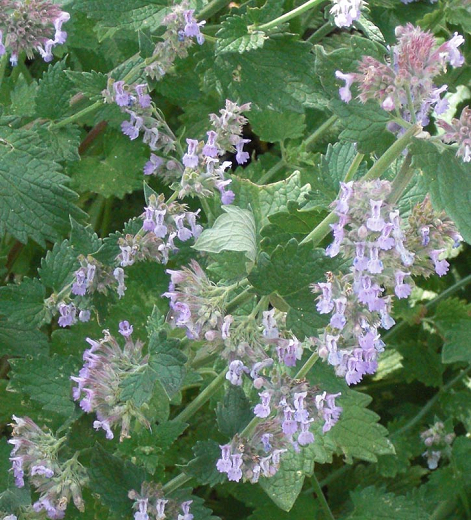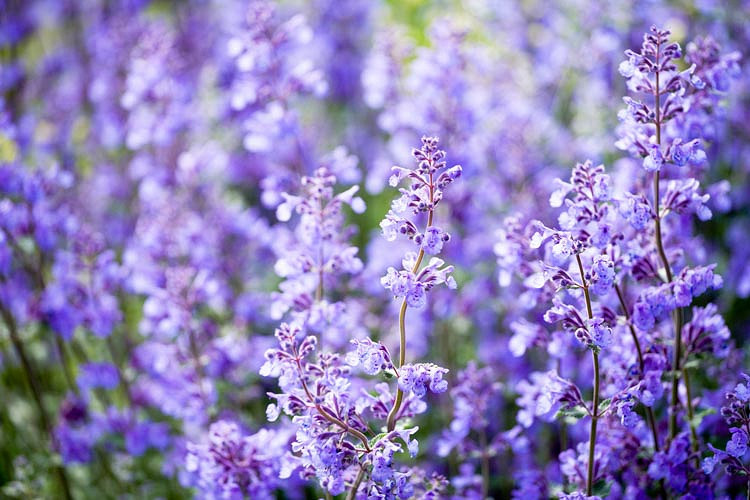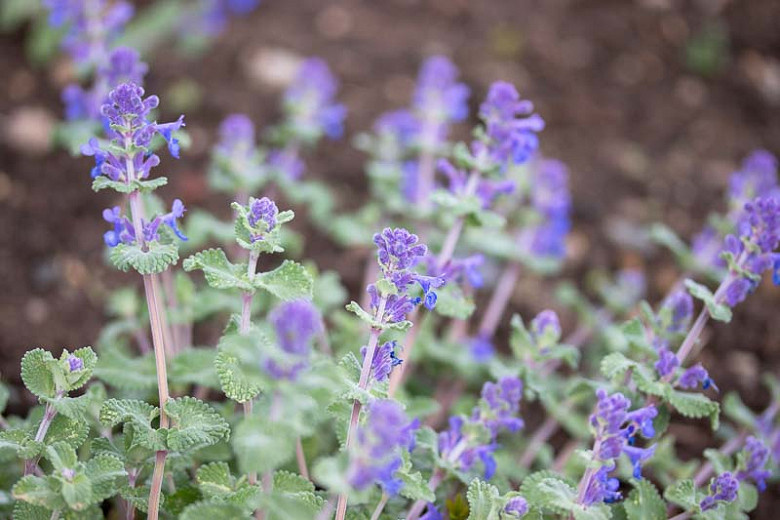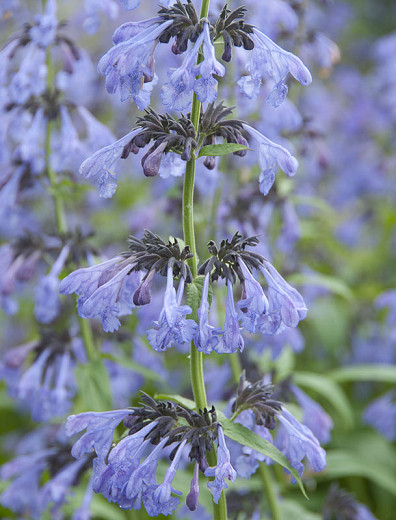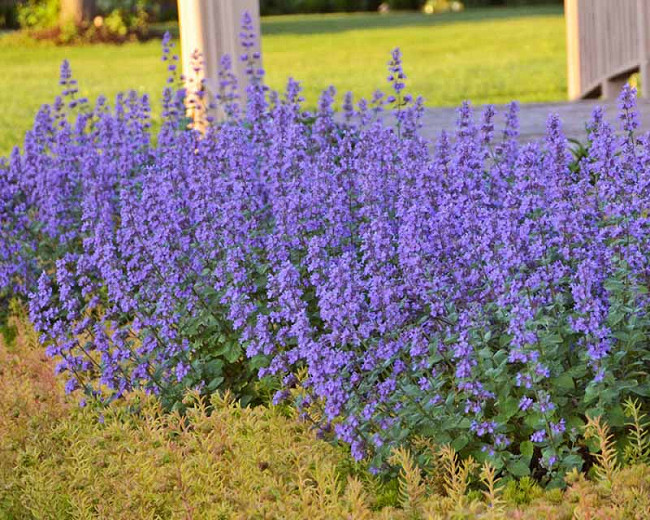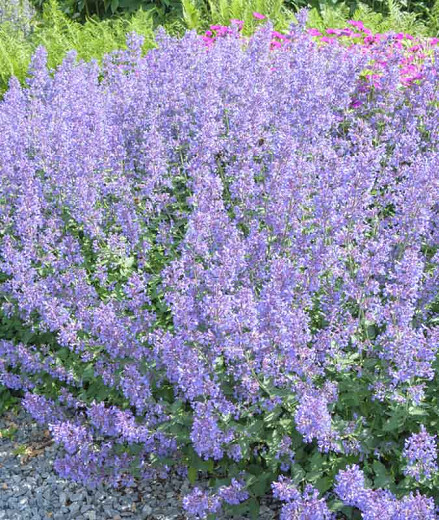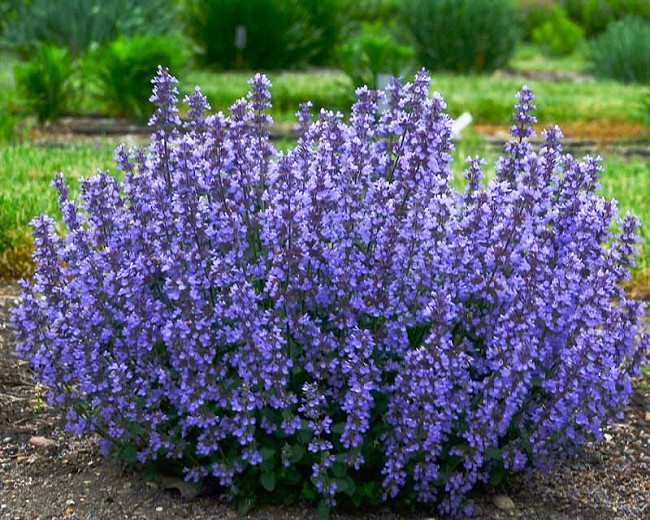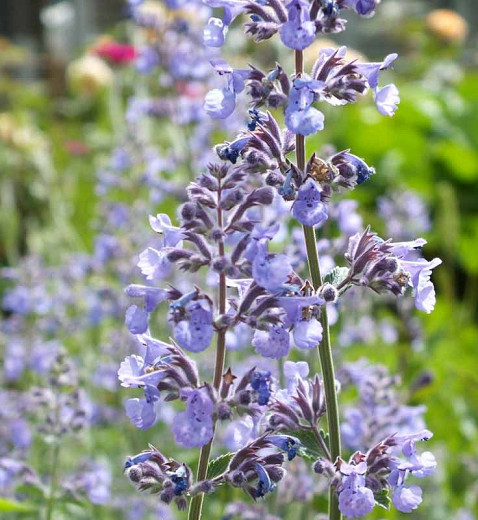Nepeta cataria (Catnip)
Nepeta cataria (Catnip) is a vigorous herbaceous perennial forming a spreading clump of erect, branched stems with aromatic, soft, oval to triangular, gray-green, toothed leaves, 3 in. long (7 cm). From late spring to early fall, they are topped with long, dense spikes of small white flowers spotted with violet. Easy-to-grow, Nepeta cataria is not very ornamental, but it deserves a spot in the herb garden. As a medicinal herb, Catnip is an excellent remedy for children, resolving feverish conditions and alleviating colic. Catnip can also be used for making an herbal tea that reportedly helps reduce stress, induce sleep, promote perspiration (fever/cold relief), soothe sore throats, and comfort upset stomachs. For the safe and appropriate use of Catnip, consult a healthcare professional. Its fresh leaves, rich in mint flavor, may be added to soups, sauces, vegetables, or pasta as a culinary herb. Finally, Catnip is a repellant for certain insects, including mosquitoes and cockroaches. To harvest Catnip, cut the stems to the ground and hang them upside down in a well-aired place. When perfectly dry, remove the foliage and store it in an airtight container for storage or use immediately for herbal teas, potpourris, or even cat toy fill!
- Grows up to 24-36 inches tall and wide (60-90 cm). This plant will self-seed in the garden, often profusely.
- Performs best in average, dry to medium, well-drained soils in full sun to part shade. It thrives in dry soils and is highly drought tolerant.
- A remarkably low-maintenance plant, this excellent performer is highly versatile and can be used in many situations: beds and borders, cottage gardens, Mediterranean gardens, and wildlife gardens. Nepeta is perfect for underplanting roses as the colors complement each other, and the foliage hides the bare feet of the rose bushes.
- Attracts butterflies but is ignored by deer.
- No serious pest or disease issues. Keep an eye out for slugs, snails, and powdery mildew in dry summers.
- Trim after flowering to keep plants compact and promote continued bloom.
- Propagate by seed or softwood cuttings in early summer, semi-ripe cuttings in early autumn, or by division.
- Most cats enjoy rubbing or chewing on the leaves of Catnip, but it can cause vomiting and diarrhea. It makes some cats sedated, and others stimulated.
- Native to Europe, Southwestern, and Central Asia.
- Find where this species is invasive in the United States.
Requirements
| Hardiness | 3 – 9 |
|---|---|
| Climate Zones | 1, 1A, 1B, 2, 2A, 2B, 3, 3A, 3B, 4, 5, 6, 7, 8, 9, 10, 11, 12, 13, 14, 15, 16, 17, 18, 19, 20, 21, 22, 23, 24 |
| Plant Type | Herbs, Perennials |
| Plant Family | Nepeta – Catmints |
| Exposure | Full Sun, Partial Sun |
| Season of Interest | Spring (Late)Summer (Early,Mid,Late)Fall |
| Height | 2' – 3' (60cm – 90cm) |
| Spread | 2' – 3' (60cm – 90cm) |
| Spacing | 24″ – 36″ (60cm – 90cm) |
| Water Needs | Average |
| Maintenance | Low |
| Soil Type | Chalk, Loam, Sand |
| Soil pH | Acid, Alkaline, Neutral |
| Soil Drainage | Well-Drained |
| Characteristics | Fragrant, Showy |
| Native Plants | United Kingdom |
| Tolerance | Deer, Drought, Dry Soil, Rocky Soil |
| Attracts | Butterflies |
| Garden Uses | Beds and Borders |
| Garden Styles | Informal and Cottage, Mediterranean Garden, Prairie and Meadow |
